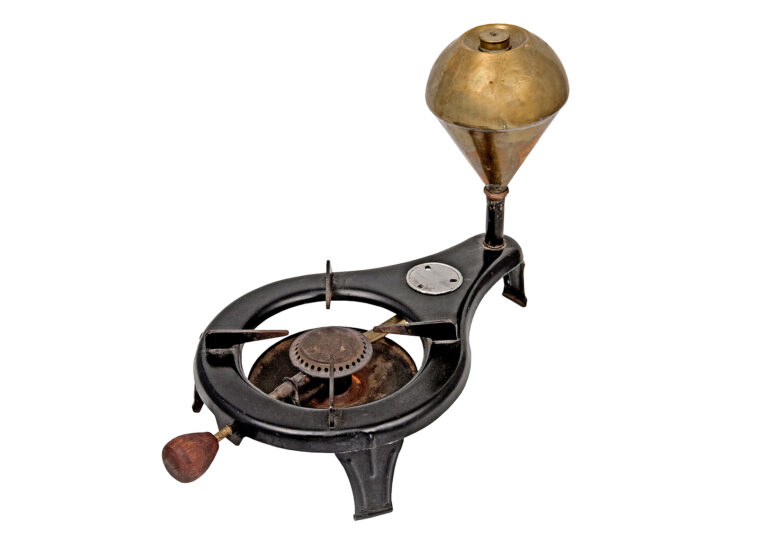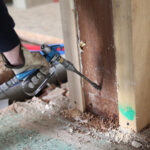As someone who absolutely loves the great outdoors and lives for adventurous escapades, I can't stress enough how crucial it is to have a trusty cooking source by your side. Whether you're a seasoned backpacker or just someone who relishes the serenity of camping in the wilderness, an alcohol stove could easily become your new best friend. Join me on this exciting journey as we dive deep into the art of crafting the most efficient DIY alcohol stove, right in the comfort of your own home.
Not only will you save some hard-earned cash by making your own stove, but you'll also take a satisfying step towards reducing your environmental impact. It's all about using clean-burning alcohol as fuel and embracing the freedom of self-sufficiency in the wild. So, let's roll up our sleeves and embark on this crafty adventure together!
Understanding the Appeal of DIY Alcohol Stoves
The Lightweight and Compact Nature
Alcohol stoves have gained immense popularity among outdoor enthusiasts for several compelling reasons. Firstly, they are exceptionally lightweight and compact. This makes them an ideal choice for activities like backpacking, camping, and hiking, where minimizing weight and conserving space are top priorities. The simplicity of DIY alcohol stoves ensures that you can carry them effortlessly, allowing you to focus on your adventure rather than the burden of heavy equipment.
The Convenience of Refueling
Another significant advantage of DIY alcohol stoves is the ease of refueling. You can carry extra fuel in small, lightweight containers, and replenishing your stove's fuel reservoir is a straightforward and mess-free process. This convenience ensures that you can keep your stove running smoothly during extended trips, eliminating concerns about running out of cooking fuel.
The Environmental Friendliness
In a world where environmental consciousness is increasingly crucial, DIY alcohol stoves shine as eco-friendly cooking options. They burn alcohol cleanly, producing minimal smoke and soot. This clean-burning characteristic significantly reduces their environmental impact compared to some other fuel sources. Moreover, alcohol, primarily denatured or ethyl alcohol, is a renewable resource, making it a sustainable choice for eco-conscious adventurers.
The Cost-Effectiveness
The cost-effectiveness of alcohol stoves is another aspect that appeals to outdoor enthusiasts. Constructing your own DIY alcohol stove is budget-friendly, as the materials required for its creation are readily available and affordable. This affordability extends to the fuel itself, with denatured or ethyl alcohol being relatively inexpensive compared to other camping fuels. By opting for DIY alcohol stoves, you not only save money but also gain a reliable and efficient cooking companion for your outdoor escapades.
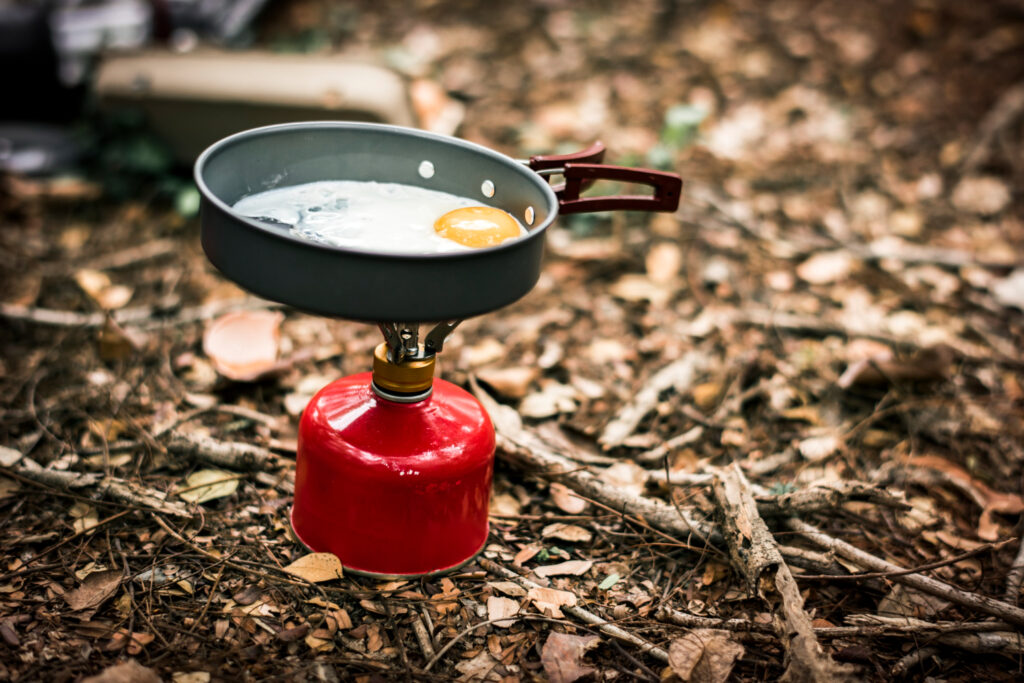
Selecting the Right Materials for Your DIY Alcohol Stove
The Versatile Aluminum Beverage Can
To embark on your journey of crafting the perfect DIY alcohol stove, you'll need to select the right materials. The foundation of your stove will be a standard aluminum beverage can. Before beginning your project, ensure that the can is clean and free from any residual liquids or odors. The versatility of an aluminum can as a crafting material makes it an ideal choice for creating a lightweight and durable stove.
The Essential Fiberglass Wick
A critical component of your alcohol stove is the fiberglass wick. This wick serves the purpose of drawing fuel from the stove's reservoir to the burner holes, ensuring a steady and consistent flame. You can easily find fiberglass wicks at hardware stores or online, making them an accessible and indispensable element in the crafting process.
The Trusty Epoxy or High-Temperature Resistant Sealant
To seal your stove securely and prevent fuel leakage, you'll require epoxy or a high-temperature resistant sealant. It's crucial to select a sealant that can withstand the heat generated during combustion without compromising safety or efficiency. This sealant plays a pivotal role in ensuring the longevity and reliability of your DIY alcohol stove.
The Handy Thumb Tack
Achieving precision in your craftsmanship is essential, and a humble thumb tack will prove to be a valuable tool in this regard. You'll use the thumb tack to create small starter holes in the aluminum can, allowing for precise placement of the burner holes. The meticulous attention to detail provided by the thumb tack ensures that your stove's performance is optimized.
The Precise Measuring Tape
Accurate measurements are the foundation of crafting a functional DIY alcohol stoves. A measuring tape will assist you in ensuring that your stove's dimensions are precise, guaranteeing that it functions as intended. This tool becomes your trusted companion as you embark on the creative journey of constructing your DIY alcohol stoves.
The Essential Scissors
Scissors are indispensable for cutting and shaping the aluminum can to form the body of your DIY alcohol stoves. They allow you to achieve clean and precise cuts, ensuring that the construction process proceeds smoothly. The selection of a reliable pair of scissors is a vital step in your preparation.
The Reliable Sandpaper
After cutting the aluminum can, you'll need sandpaper to smooth the rough edges. This finishing touch not only enhances the stove's appearance but also ensures your safety while handling it. Sandpaper becomes your final brushstroke, perfecting the masterpiece of your DIY alcohol stove.
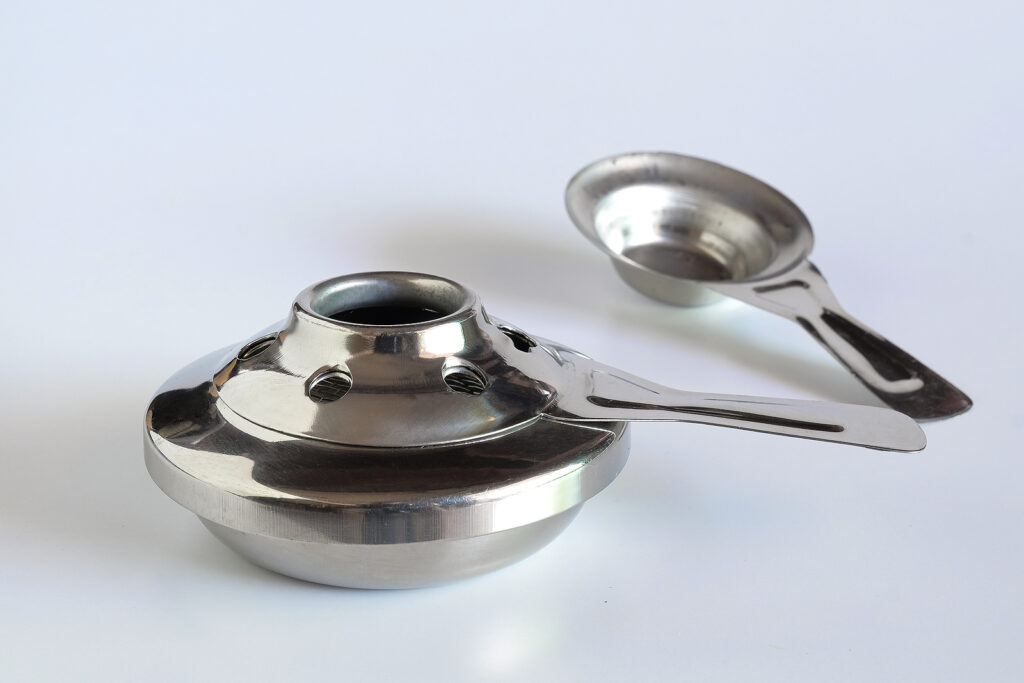
Preparing Your Workspace: The Foundation of Craftsmanship
Before you dive into the world of craftsmanship, it's crucial to lay the foundation for your creative journey by setting up an ideal workspace. A well-thought-out and meticulously arranged environment will serve as the canvas for your artistic endeavors. Given that you'll be working with materials like epoxy or sealant, it's paramount to prioritize proper ventilation to safeguard your well-being and enhance your working comfort.
Begin by dedicating time and attention to the setup of your workspace. Ensure it is clean, well-organized, and adequately ventilated. Adequate ventilation not only ensures a safe working environment but also minimizes the exposure to potentially harmful fumes.
Take care to arrange all your tools and materials thoughtfully, keeping them easily accessible. This meticulous planning will contribute significantly to your project's efficiency and overall success. With your workspace finely tuned and your tools at your fingertips, you'll be well-prepared to embark on this rewarding and creative journey of craftsmanship.
The Intricate Art of Crafting Your Alcohol Stove
Now that you've selected the right materials and prepared your workspace, let's delve into the intricacies of crafting your DIY alcohol stove.
Precision Cuts: Crafting the Perfect Aluminum Can
- Start your crafting journey by using scissors to remove the top of the aluminum can. Cut approximately 1 inch (2.5 cm) below the top rim to create an open cylinder.
- Next, proceed to cut the bottom of the can, leaving a cylinder-like piece that's approximately 2 inches (5 cm) in height.
- Discard the top and bottom pieces of the can, retaining the central cylinder.
Marking the Burner Holes: Where Efficiency Begins
- With your central aluminum cylinder ready, it's time to mark the positions for the burner holes. Measure approximately 1 inch (2.5 cm) from the top of the cylinder and make a precise mark.
- Continue this process, spacing your marks evenly around the circumference of the can, maintaining approximately 1-inch intervals between them.
Drilling with Precision: The Heart of the Stove
- To create the burner holes, start by using a thumb tack to create small starter holes at each marked position. The precision achieved with the thumb tack ensures that your burner holes are accurately placed.
- Following the starter holes, use a drill to create the burner holes themselves. The size of these holes will influence the flame size and heat output of your stove. Smaller holes produce a simmering flame, while larger ones generate a more robust and powerful flame. Feel free to experiment with different hole sizes to discover the perfect balance for your culinary needs.
The Elegance of the Fiberglass Wick
- The fiberglass wick plays a crucial role in your DIY alcohol stoves functionality. Cut a piece of fiberglass wick that's slightly longer than the height of the can.
- Insert the fiberglass wick through the center of the can, allowing approximately 0.5 inches (1.3 cm) to protrude from the top. This protruding wick becomes the ignition source for your stove.
- Trim any excess wick at the bottom, ensuring that it doesn't touch the base of the can, as this could impact the stove's efficiency.
Sealing the Deal: Epoxy or High-Temperature Resistant Sealant
- To guarantee the integrity of your DIY alcohol stoves, apply epoxy or a high-temperature resistant sealant around the top edge of the can, where the fiberglass wick is inserted. It's essential to create a secure and airtight seal to prevent any fuel leakage during use.
- Allow the sealant to cure as per the manufacturer's instructions, ensuring that it sets completely before proceeding with testing and use.
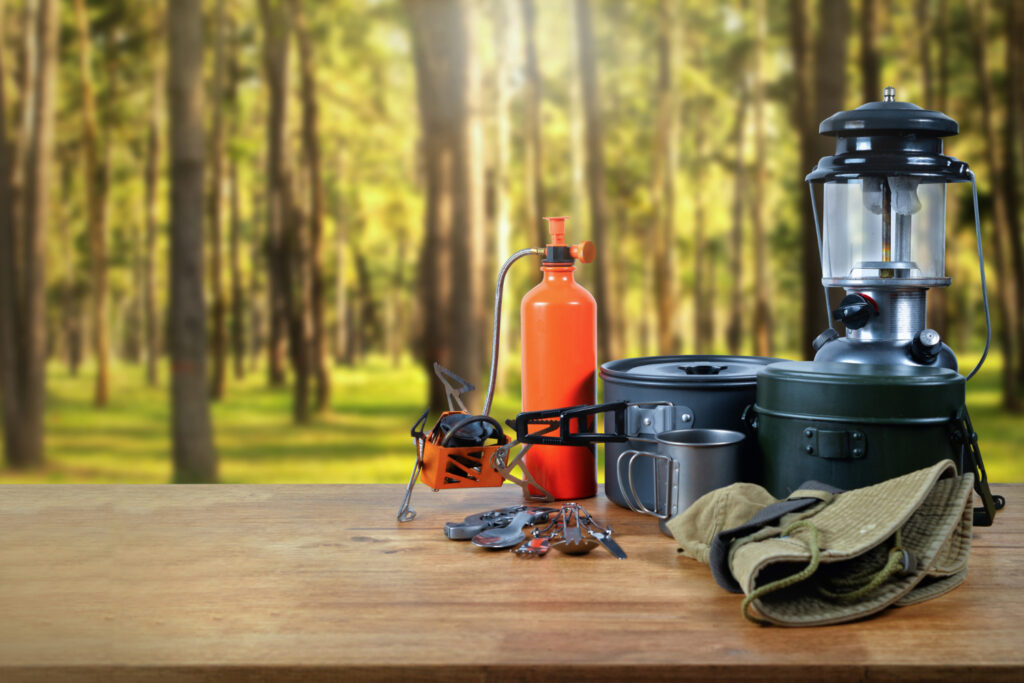
Testing the Craftsmanship: Your DIY Alcohol Stove in Action
Before embarking on your outdoor adventure, it's crucial to test your DIY alcohol stove to ensure its proper functionality and efficiency.
Fueling Your Creation: The Heart of the Flame
To fuel your alcohol stove, fill its reservoir with denatured alcohol or ethyl alcohol. These alcohol types are commonly used as fuel for DIY alcohol stoves and can be found at camping supply stores or hardware shops. Be cautious not to overfill the reservoir, as to make an alcohol stove how to soda can stove are highly efficient, and a little fuel goes a long way.
Ignition: Lighting the Path to Culinary Adventures
Using a long lighter or a matchstick, ignite the protruding end of the fiberglass wick. The flame will travel down the wick to reach the burner holes, initiating the combustion process. Witnessing your stove come to life is a moment of satisfaction and achievement.
Boiling Water: The Ultimate Test of Efficiency
To assess your stove's efficiency, place a pot or pan on top of your DIY alcohol stoves and time how long it takes to bring a specific quantity of water to a boil. This test provides valuable insights into your stove's heating capacity and efficiency. Experiment with different pot sizes and materials to optimize heating efficiency and discover the ideal configuration for your culinary needs.
Mastering Efficiency: Tips and Techniques
- Enhance the performance of your DIY alcohol stoves by using a windscreen. A windscreen protects your stove from wind interference, which can impact its efficiency and cooking times.
- Experiment with various pot sizes and materials to determine the optimal combination for your stove. Different setups may yield different results in terms of efficiency and cooking speed.
- Prioritize safety by maintaining a safe distance from the flame during use and utilizing a pot lifter to handle hot cookware.
Nurturing Your Creation: Maintenance and Safety
To ensure the longevity and safety of your DIY alcohol stove, it's essential to follow maintenance guidelines and safety precautions diligently.
Post-Cooking Ritual: Cleaning Your Alcohol Stove
After each use, allow your stove to cool completely. Once it's cool to the touch, wipe it down to remove any soot or residue that may have accumulated during use. Keeping the burner holes clean is crucial to ensure a consistent flame and efficient performance. Regular cleaning and maintenance contribute to the continued reliability of your DIY alcohol stoves.
Storage Wisdom: Safeguarding Your Craft
When storing your DIY alcohol stoves, choose a cool, dry location. Ensure that you empty any remaining fuel from the reservoir to prevent potential leakage or evaporation. Additionally, store your stove away from flammable materials or sources of heat. Proper storage preserves the condition of your stove and minimizes any safety risks.
Safety First: The Guiding Principles
- Always use your alcohol stove in a well-ventilated area or outdoors. Adequate ventilation is vital for safety when burning alcohol fuel.
- Keep the stove at a safe distance from open flames, sparks, or other heat sources to prevent accidents and ensure your safety.
- Refrain from refilling the stove while it's still burning or hot to prevent potential fuel spillage and hazards.
- Utilize a designated fuel bottle for alcohol fuel to avoid confusion and potential accidents, ensuring that you use the correct fuel source for your stove.
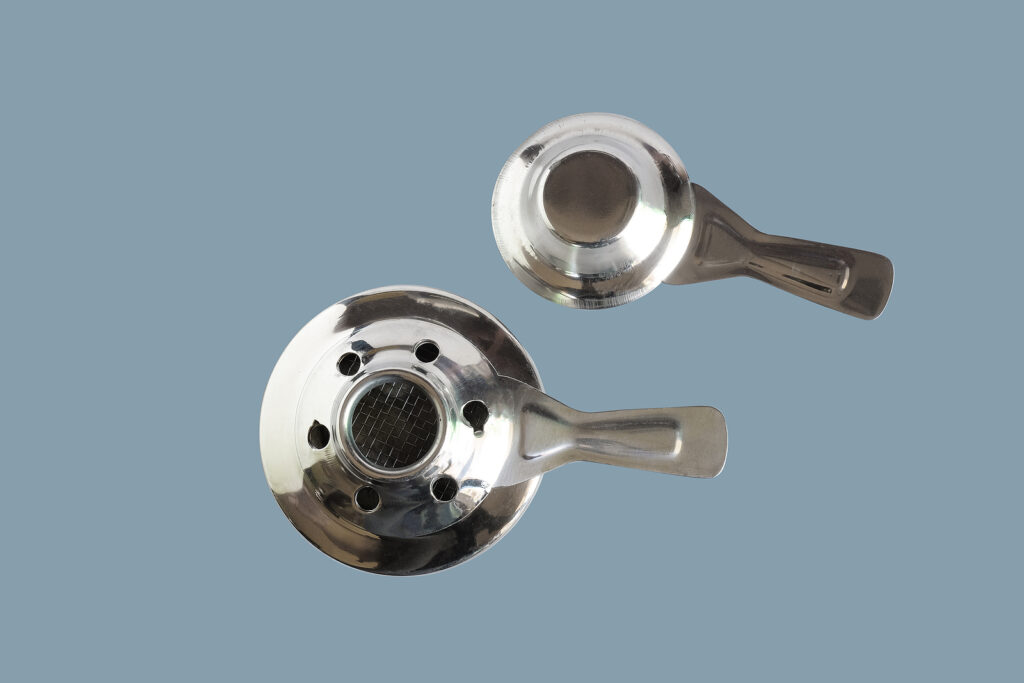
DIY vs. Commercial Alcohol Stoves: A Comparative Analysis
When it comes to alcohol stoves for outdoor cooking, there's more to the decision than meets the eye. DIY alcohol stoves undoubtedly have their perks, such as customization options and cost savings. However, it's crucial to explore the alternative: commercial alcohol stoves. These stoves are readily available in the market and offer a range of features and benefits that might align better with your needs.
Before making a decision, take a closer look at the following factors to ensure you choose the stove that suits you best:
- Customization and Personalization: DIY stoves allow you to tailor the design and functionality to your specific requirements. You can experiment with different materials and designs to create a stove that's uniquely yours. Commercial stoves, on the other hand, come with pre-set features, limiting your ability to personalize them.
- Budget: Cost considerations play a significant role in this comparison. DIY stoves are often more budget-friendly since you can source materials inexpensively or even repurpose items you already have. Commercial stoves may come with a higher price tag, but they often offer durability and advanced features in return.
- Convenience: Commercial alcohol stoves are designed for ease of use. They come ready to go, requiring little to no assembly or modifications. DIY stoves, while customizable, can demand more time and effort in the construction phase and may require fine-tuning to achieve optimal performance.
- Performance: Commercial stoves are engineered for efficiency and reliability. They typically have features like simmer control and wind resistance built in, ensuring consistent performance in various conditions. DIY stoves may require more testing and adjustments to achieve the same level of performance.
- Safety: Commercial stoves are often certified for safety and have undergone rigorous testing. DIY stoves may lack these certifications, making them potentially riskier to use if not constructed with care and attention to safety.
- Environmental Impact: Consider the environmental impact of your choice. DIY stoves may allow you to upcycle materials, reducing waste. However, some commercial stoves are designed with eco-friendly features and materials, contributing to a more sustainable outdoor experience.
Final Thoughts
In my personal experience as an outdoor enthusiast, crafting a DIY alcohol stove has been a deeply rewarding and environmentally conscious endeavor. These stoves offer the perfect blend of lightweight design, ease of refueling, and cost-effectiveness, making them ideal companions for adventures in the wilderness. The intricate process of crafting one's stove, from precise cuts to sealing with epoxy, adds a unique sense of accomplishment to each outdoor journey.
While I appreciate the benefits of DIY stoves, it's essential to consider the convenience and safety features that commercial options provide. DIY stoves allow for customization and a personal touch, but they may demand more effort and experimentation. On the other hand, commercial stoves offer reliability and ease of use, although they come with a higher price tag.
In the end, whether you choose to construct your own or opt for a commercial stove, the heartwarming experiences of outdoor cooking and the lasting memories created in nature are what truly matter. So, embark on your crafting journey with enthusiasm, and may your outdoor adventures be enriched with the flavors of the wild and the spirit of exploration.
Sources
https://www.csun.edu/~mjurey/myths.html
https://ncoae.org/blog/do-it-yourself-part-one-denatured-alcohol-stove/


